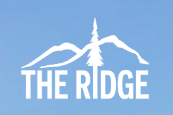Paradise Irrigation District (PID) would like to answer as many of our resident’s questions as possible regarding the benzene contamination. We will continue to provide more information as we learn more throughout the process. Below is information on why we believe the contamination occurred, what testing has been conducted and what those initial results are. It is important for our residents to understand, that these tests are only the beginning of the test and remediation process. It is PID’s goal to work with our community to identify all portions of the system that is contaminated and to remove all contamination from the system.
Why is there a contamination?
This is a rather new concern that has only been identified following a few large wildland fires in the last year. Evidence from recent wildfires suggests that benzene contamination occurs when properties with plastic pipes burn and there are water system pressure losses or periods of low pressure. When the plastic pipe melts there are little plastic particles from the pipe that can be drawn into the property owner’s water connection and sometimes past the meter and into the public water system.
Water Quality Testing to Date
Due to the recent concerns from other fires, PID and the State Division of Drinking decided to pull some initial water quality samples to see if similar contaminants were present in the Paradise water system. Our initial strategy was to pull samples from 17 different areas of the system, including three different types of plumbing systems. The following is a breakdown of those samples, where they were taken from, and the results for benzene.
Explanation of Acronyms Used:
- MCL - The California Maximum Contaminant Level for benzene = 1 ug/L
- ug/L – Microgram per liter (approximately 1 part per billion ppb)
- ND – Not Detected
Transmission System (5 tests)
This is the large delivery system where water travels from Paradise Lake, through the treatment plant, and into town. It is made up of large-diameter pipes and large storage tanks. Regardless of where you live in town, water will probably travel through most of this system before it gets to you. We believe the water is safe and healthful from the Lake as it enters the system. PID will continue to test the transmission system to ensure it remains non-detect for benzene.
- Pump Station 2 = ND
- A Tank = ND
- C Tank = ND
- D Tank = ND
- E Tank = ND
Distribution Systems (4 tests)
This is the subset of smaller piping throughout town that delivers water into your neighborhood. You and your neighbors may or may not get your water from the same distribution system. There are many factors that determine which pipes deliver water to your home. To date, only a small portion of our distribution system has water. Until the entire distribution system is operational, customers are cautioned to follow the instructions on our previous water advisories as conditions may change. PID plans to test many more samples of water as the system is turned on.
- 3 tests = ND
- 1 test; Lower Pentz Road = 1.1 ug/L.
Private Plumbing Systems (3 paired tests)
These systems are where the water is finally delivered to the customer’s home. Each property has a private plumbing system that starts from the PID meter and goes throughout the property.
|
Location |
Customer side of meter |
PID side of meter |
|
Off Upper Pentz Road |
1.1 ug/L |
ND |
|
Off Lower Pentz Road |
15.6 ug/L |
ND |
|
In the Valley View Area |
0.8 ug/L |
ND |
Next Steps
Although some of the tests came back as “Not Detected”, Paradise Irrigation District feels that even a few positive results means that we need to do more testing in order to ensure that water is safe at all meters. We also feel based on these results that benzene could be present on the customer side of the meter and not present on PID’s side. For this reason, we urge customers to continue to follow the instructions on PID’s most recent water advisory available HERE.
We are working with California’s Division of Drinking water to develop a water sampling plan that will help us find and remove the contamination. Once the contamination is removed, PID will continue to test water to ensure we are delivering safe, clean water. Once developed and approved, PID will share the sampling plan on our website and other social media sites.

Paradise residents will soon have more answers to their water-related questions. PID has been working with Sean Dingman from Websoft Developers, Inc. to develop an online water system map to show availability of water to neighborhoods, water status at parcels, and water testing results. We hope to have the map published by February 1st.
Green highlighting will indicate pipes that have been filled and parcels where customers can use water now. PID will also share water testing results on the map so residents can track the progress of the system as PID tests for and resolves water quality issues.
Thanks to Websoft Developers, Inc. who has donated their time and mapping technology to help our water system and town recover from the devastating Camp Fire.

